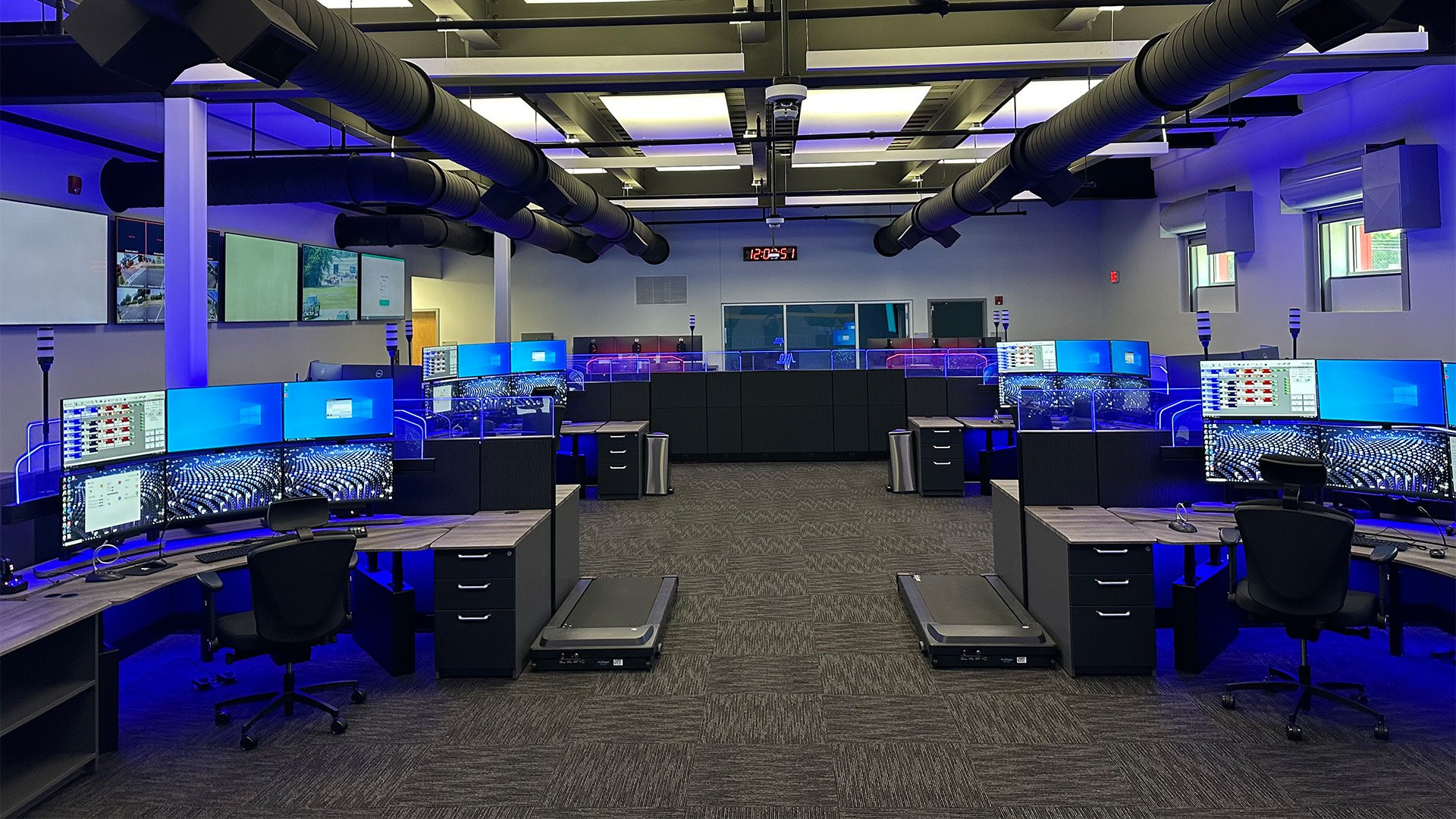
We’ve seen a lot of hospitals put radiologists into small, weird-shaped rooms, with no thought of who is actually working in that room and how they’re going to use it. Radiologists don’t just sit (or better yet, stand) at a desk with one computer. Most Radiologists have multiple computers and monitors and they need to be in a dark, quiet room to work. They also need control over the room’s light, climate and noise. Together, these factors present a complicated environment for radiologist to work in.
A Customized Approach
That’s why, for many hospitals looking to update, change or add to their radiology reading rooms, customizable PACS furniture is the only way to go. Fitting furniture into corners that are not 90 degrees, or corners with columns built in, are two examples of how customizations can help outfit a radiology reading room appropriately. It’s also common to see old patient rooms turned into reading rooms. Furniture which can be manufactured per the requirement of the room and not to any pre-set sizes will allow you the functionality you need.
Effective Design
Working with a professional designer with an expertise in custom furniture design can help eliminate the stress and unforgivings of creating a design solution to fit your unique needs. When you work with a designer who is qualified and understands these tight spaces and unique requirements, they will ask a variety of questions:
• Can the furniture be built around these roadblocks?
• What type of power do you need in the room?
• How will the monitors fit at each station?
• Is the system flexible enough to handle dual-head monitors, or large,
single-screen, 39-inch monitors?
Effective room design also requires a professional designer to make sure everything fits and is in its proper place. This is part of the ergonomics process, which also helps increase productivity. Designers can account for multiple monitors and how they are laid out to maximize the comfort of any individual. Which way does the radiologist want to face in the room? Do they want their backs to the door, or would they rather see who is coming into their room? Locations of light switches and thermostats are important considerations, as well.
An experienced professional design team will help with all these issues and more. They can help with the flow of work in the room, and make suggestions on where your station will fit best. But most of all, they’ll make sure that radiologists have every tool they need to do their jobs effectively, all while providing them with a comfortable, ergonomic work space that supports their overall health and well-being.
A furniture company with a strong engineering department and years of experience can help customize a reading station that works in these weird-shaped, difficult rooms. Manufacturers with their own production capabilities can design, manufacture and install the furniture, which will fit these spaces like a glove. If an organization has unique requirements — such as light boards that need to be on the right or the left — a custom furniture company should be able to seamlessly tackle those, as well.
Doesn’t custom equal expensive? Not nowadays with modern computer controlled machines cutting all of the components to your size. With the right company you should be able to get furniture made within a tolerance of 1/16” or even smaller. What is expensive is getting a 72” station when you need 80”. That slows down productivity by putting your critical work needs out of your primary reach zone.
While there is no hard fast way to seamlessly plan for all the unexpected.seem daunting. But, with and effective design and efficient engineering a custom furniture solution can help you overcome these and make your project a success.


